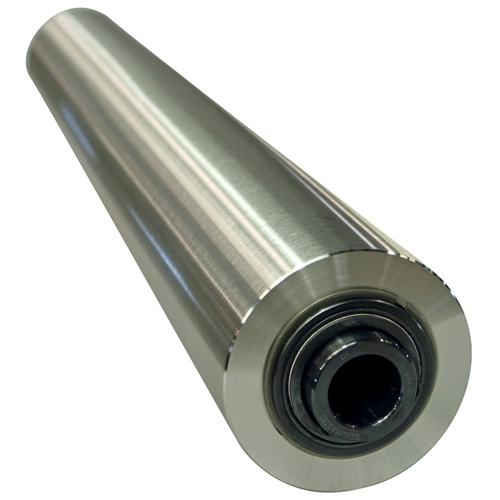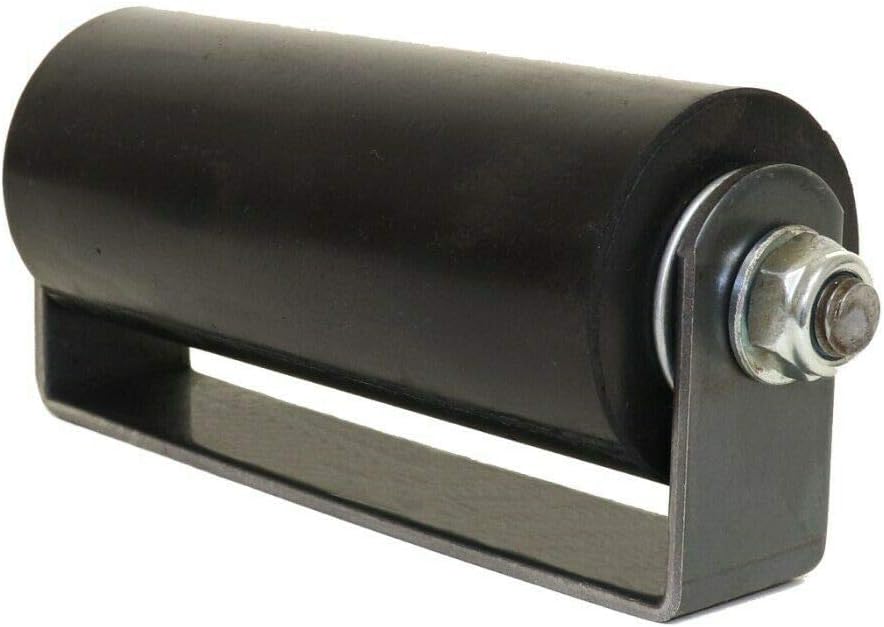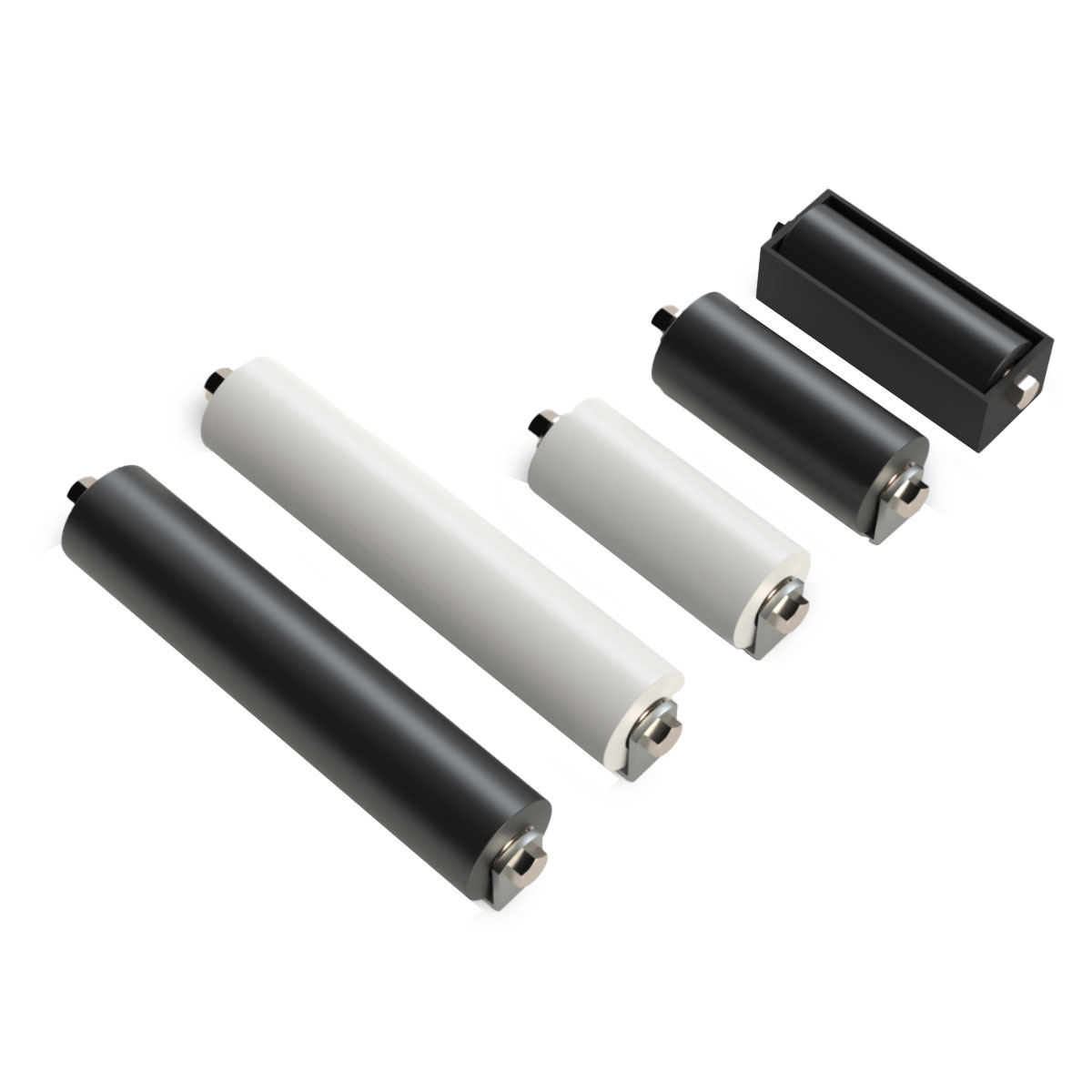Product Description
ZheJiang CHINAMFG Conveyor Engineering Co., Ltd
Direct manufacturer from China, established in year 1976, with 45 years’ history, exporting for 15 years to more than 70 countries.
With ISO9001, ISO14001, ISO18001, CE.
Kinds of Roller, frame, pulley are our main products
We can make based on clients’ drawings, requirements
Accept OEM.
Standard: GB, ISO, CEMA, DIN, JIS, etc
Production capacity: As usual 5000 pieces/ week, but urgent order is acceptable
Certificate: CE, ISO, BV, SGS, IKA, etc
Advantage:
The life time: More than 30000 hours
Samples for testing are available.
The more relaxed payment terms
Detailed conveyor roller idler feature:
1. Roller idlers Dia 50mm-219mm, length 190-3400mm, which are used in the steel industry, harbor, coal industry, power industry, cement industry, etc
2. Tube: Q235
3. Shaft: 45# STEEL
5. Bearing: Single & Double Row Deep Groove Ball Bearing 2RZ&2Z with C3 clearance.
6. Seals: Grease retaining inner seal with Multi-stage Labyrinth and Retention Cap with Outboard Rubbing Flinger Seal.
7. Lubrication: Grease is Lithium soap type grease with Rust Inhibitors.
8. Welding: Mixed gas shielded arc welding end
9. Painting: Ordinary painting, hot galvanized painting, electric static spraying painting, baked painting
Besides we can manufacture the rollers and idlers according to the buyers’ requirements
| Standard External Diameter |
Standard Inner Diameter |
Length scope ( mm) | Bearings Type (Min~Max) |
|
| mm | In | mm | ||
| 89 | 3 1/3 | 60/50 | 170-3400 | 204 |
| 102 | 4 | 76 | 170-3400 | 204 205 |
| 108 | 4 1/4 | 89/76/60 | 170-3400 | 204 205 |
| 114 | 4 1/2 | 89/76 | 170-3400 | 204 205 |
| 127 | 5 | 89 | 170-3400 | 204 205 |
| 133 | 5 1/4 | 89/70/63.5 | 170-3400 | 204 205 |
| 140 | 5 1/2 | 89 | 170-3400 | 204 205 |
| 152 | 6 | 108/76 | 170-3400 | 306 |
| 159 | 6 1/4 | 108 | 170-3400 | 306 |
| 194 | 7 5/8 | 159/133 | 170-3400 | |
/* January 22, 2571 19:08:37 */!function(){function s(e,r){var a,o={};try{e&&e.split(“,”).forEach(function(e,t){e&&(a=e.match(/(.*?):(.*)$/))&&1
| Application: | Coal Mining Industry, Cement, Harbor,etc |
|---|---|
| Certificate: | CE, ISO, BV, SGS, Ika, etc |
| Dia: | 60-219mm |
| Length: | 150-3500mm |
| Tube Material: | S235jr |
| Shaft Material: | Deep Drawn Steel C45(DIN) |
| Samples: |
US$ 1/Piece
1 Piece(Min.Order) | |
|---|
| Customization: |
Available
|
|
|---|

How does the choice of materials impact the performance of guide rollers in different environments?
The choice of materials for guide rollers significantly impacts their performance in different environments. Here’s a detailed explanation of how material selection affects the performance of guide rollers:
- Wear Resistance:
Guide rollers are subjected to continuous contact and friction with the conveyed materials or objects. The choice of materials with high wear resistance is crucial to ensure the longevity and performance of guide rollers. Materials such as steel, stainless steel, or polyurethane are commonly used for guide rollers due to their excellent wear resistance properties. These materials can withstand the abrasion and wear caused by repetitive contact with the conveyed materials, resulting in extended service life and reliable performance in demanding environments.
- Corrosion Resistance:
In environments where guide rollers are exposed to moisture, chemicals, or corrosive substances, selecting materials with high corrosion resistance is essential. Stainless steel is a popular choice for guide rollers in corrosive environments due to its resistance to rust and corrosion. Stainless steel guide rollers can withstand the effects of water, chemicals, and harsh substances, ensuring long-term performance and preventing premature failure or degradation due to corrosion.
- Temperature Resistance:
In environments with extreme temperatures, the choice of materials with appropriate temperature resistance is critical to ensure the performance and durability of guide rollers. For high-temperature applications, materials such as heat-resistant steel alloys or specialized polymers that can withstand elevated temperatures are used. Conversely, in low-temperature environments, materials that remain flexible and maintain their mechanical properties at low temperatures, such as certain types of plastics or elastomers, are preferred. Selecting materials with suitable temperature resistance ensures that guide rollers can operate effectively and reliably in extreme temperature conditions.
- Load-Bearing Capacity:
The choice of materials for guide rollers affects their load-bearing capacity, which is crucial for supporting the weight of the conveyed materials or objects. Materials with high strength and stiffness, such as steel or reinforced polymers, are commonly used to ensure sufficient load-bearing capacity. The material’s ability to withstand high loads without deformation or failure is essential for maintaining the stability and performance of guide rollers, particularly in heavy-duty applications or environments with significant material or object weights.
- Noise and Vibration:
The choice of materials can influence the level of noise and vibration generated by guide rollers during operation. Softer materials with vibration-dampening properties, such as certain types of plastics or elastomers, can help reduce noise and vibration levels. These materials absorb and dissipate vibrations, resulting in quieter operation and reduced potential for noise-related issues or worker discomfort. Choosing materials that minimize noise and vibration is particularly important in environments where noise control is a priority, such as in indoor facilities or noise-sensitive areas.
- Contamination and Cleanliness:
In environments where cleanliness and contamination control are critical, the choice of materials for guide rollers can play a significant role. Some materials, such as stainless steel or certain types of plastics, have smooth and non-porous surfaces that are resistant to contamination buildup. These materials are easier to clean and maintain, reducing the risk of particle generation or contamination transfer to the conveyed materials. Selecting materials that meet cleanliness requirements is essential in industries such as food processing, pharmaceuticals, or electronics manufacturing.
In summary, the choice of materials for guide rollers has a substantial impact on their performance in different environments. Factors such as wear resistance, corrosion resistance, temperature resistance, load-bearing capacity, noise and vibration levels, and contamination control should be considered when selecting materials for guide rollers. By choosing the appropriate materials for specific environmental conditions, guide rollers can deliver optimal performance, longevity, and reliability in a wide range of applications and industries.

Are there innovations or advancements in guide roller technology that have emerged recently?
Yes, there have been several recent innovations and advancements in guide roller technology. Here are some notable developments:
- High-Performance Materials:
Recent advancements in materials science have led to the development of high-performance materials for guide rollers. These materials offer improved strength, durability, and wear resistance, allowing guide rollers to withstand heavy loads and harsh operating conditions. For example, composite materials combining polymers and fibers offer excellent mechanical properties while being lightweight. Additionally, advancements in surface coatings, such as ceramic or diamond-like carbon (DLC) coatings, provide enhanced friction reduction, corrosion resistance, and longevity.
- Precision Design and Manufacturing:
Guide rollers are now being designed and manufactured with a greater emphasis on precision. Advanced manufacturing techniques, such as computer numerical control (CNC) machining and 3D printing, enable the production of guide rollers with complex geometries, tight tolerances, and optimized performance characteristics. This precision design and manufacturing result in guide rollers that offer improved alignment, reduced vibration, and enhanced overall performance.
- Integrated Sensors and Monitoring:
Advancements in sensor technology have made it possible to integrate sensors directly into guide rollers. These sensors can monitor various parameters such as temperature, vibration, or load, providing real-time feedback on the condition and performance of the guide rollers. This data can be used for predictive maintenance, allowing for proactive identification of potential issues and timely intervention to prevent failures or downtime. Integrated sensors and monitoring systems contribute to improved reliability, efficiency, and maintenance practices in material handling systems.
- Smart Guide Rollers:
Smart guide rollers leverage emerging technologies, such as Internet of Things (IoT) and artificial intelligence (AI), to enhance their functionality and performance. These guide rollers can communicate with other components or systems within the material handling setup, enabling real-time optimization, automation, and control. For example, smart guide rollers can adjust their position or speed dynamically based on the specific material being handled or the desired process parameters. This adaptability and intelligence lead to improved efficiency, flexibility, and responsiveness in material handling operations.
- Energy Efficiency:
In response to the growing emphasis on sustainability and energy conservation, guide roller technology has seen advancements aimed at improving energy efficiency. This includes the development of low-friction materials, optimized roller designs, and innovative bearing systems that minimize power consumption and reduce frictional losses. By reducing energy requirements, these advancements contribute to lower operational costs and a reduced environmental footprint.
In summary, recent innovations and advancements in guide roller technology encompass high-performance materials, precision design and manufacturing, integrated sensors and monitoring, smart capabilities, and energy efficiency. These advancements enhance the durability, performance, reliability, and sustainability of guide rollers, making them more effective and versatile in a wide range of material handling applications.

Can you describe the factors to consider when selecting guide rollers for specific applications?
When selecting guide rollers for specific applications, several factors need to be considered to ensure optimal performance and compatibility. Here’s a detailed explanation of the factors to consider:
- Load Capacity:
The load capacity is a crucial factor to consider when selecting guide rollers. It refers to the maximum weight that the guide roller can support without compromising its performance or longevity. It’s important to assess the expected load requirements of the application, including both static and dynamic loads. Selecting guide rollers with an appropriate load capacity ensures that they can effectively support the materials or objects being handled, preventing premature wear, deformation, or failure.
- Speed and Acceleration:
The speed and acceleration at which the guide rollers will operate are essential considerations. Higher speeds and accelerations can place increased stress on the guide rollers, requiring a design that can handle the resulting forces and vibrations. It’s important to choose guide rollers that are specifically designed for the anticipated speed and acceleration of the application to ensure smooth movement, minimize wear, and prevent issues such as excessive noise or instability.
- Environmental Conditions:
The environmental conditions in which the guide rollers will be used play a significant role in their selection. Factors such as temperature, humidity, dust, chemicals, and exposure to corrosive substances can affect the performance and lifespan of guide rollers. It’s crucial to choose guide rollers that are made from materials and coatings suitable for the specific environmental conditions to ensure durability, corrosion resistance, and reliable operation over time.
- Guidance and Alignment Requirements:
The level of guidance and alignment required by the application is an important consideration. Some applications may require precise tracking and alignment, while others may need minimal guidance. The design and configuration of the guide rollers, such as flanges, grooves, or tapered shapes, should be selected based on the specific guidance and alignment needs of the materials or objects being handled. Choosing guide rollers that provide the necessary level of guidance ensures accurate movement, prevents misalignment, and minimizes the risk of material damage or operational disruptions.
- Mounting and Integration:
The mounting and integration of guide rollers within the application should be considered during the selection process. This includes factors such as the available space for mounting, the type of mounting arrangement required, and compatibility with existing machinery or systems. Guide rollers should be selected with appropriate dimensions, shaft configurations, and mounting options to ensure easy installation and seamless integration into the application.
- Maintenance and Serviceability:
Considering the maintenance and serviceability aspects is important when selecting guide rollers. Factors such as accessibility for lubrication, ease of cleaning, and the availability of replacement parts should be considered. Guide rollers that are designed for easy maintenance and serviceability can help minimize downtime, extend the lifespan of the rollers, and reduce overall maintenance costs.
By considering these factors, including load capacity, speed and acceleration, environmental conditions, guidance and alignment requirements, mounting and integration, and maintenance and serviceability, the selection of guide rollers can be optimized for specific applications. This ensures that the chosen guide rollers are well-suited to handle the demands of the application, resulting in efficient material handling, reliable operation, and extended service life.


editor by Dream 2024-04-19